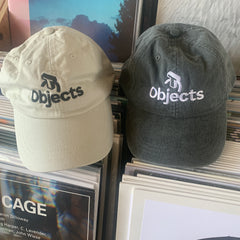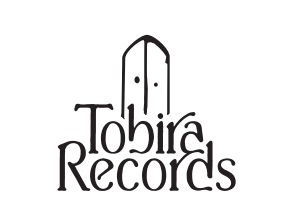クイックビュー
{"id":9010859311354,"title":"LAMIEE. \/\/ LUM LP [COLOR]","handle":"lamiee-lum-lp-color","description":"\u003cp\u003e過去にDinzu ArtefactsやNever Anythingなどから発表しているイタリアのパーカッショニストLamiee.が、2025年11月にアメリカの実験レーベルenmossedから100部限定でリリースしたレコードです。\u003c\/p\u003e\n\u003cp\u003eスネアドラムをメインソースにしたを用いた物音ドローン10曲を収録。DLコード付属。色はランダムです。\u003c\/p\u003e\n\u003cp\u003e以下、Nick Kleinによる解説です。\u003c\/p\u003e\n\u003cp\u003e\u003cem\u003e\"Nicholas RemondinoのプロジェクトLAMIEE.が、enmossedレーベルより最新アルバム『𝑳𝑼𝑴』を発表。10の電子音響的探求を通じて、機械的なガタガタ音と振動の反復的実装がスネアドラムの打撃面の可能性を拡張する。倍音とハーモニクスが残響の中で膨らむ中、Remondinoはモーター、1台のプリペアド・スネアドラム、ボーカルサンプル、フィードバックを基盤に、ほぼ宗教的な音響環境を構築する。\u003c\/em\u003e\u003c\/p\u003e\n\u003cp\u003e\u003cem\u003e打楽器としての教条性を逆転させ、Remondinoの張り詰めたドラムヘッドは、絶え間なく変調する流動の中で金属的な共鳴を帯びる。𝑳𝑼𝑴は時に聴き手を洞窟のような地下世界へと包み込み、またある時は濃厚な香煙を貫く、くすんだ黄金の蝋燭の光のように自らを表現する。サイケデリックな敬虔さを帯びた本作は、ステンドグラスの鈍い重みが聴覚体験へと流れ込み、乳香と没薬が鼻腔をくすぐり、超越性が多層的な方向性で動き回る。𝑳𝑼𝑴は、enmossedが精巧にキュレーションした音響的瞑想の先進カタログにおける新たな章として位置づけられる。\"\u003c\/em\u003e\u003c\/p\u003e\n\u003cp\u003e\u003ciframe src=\"https:\/\/bandcamp.com\/EmbeddedPlayer\/album=2329993547\/size=large\/bgcol=ffffff\/linkcol=0687f5\/tracklist=false\/artwork=none\/transparent=true\/\" style=\"border: 0; width: 100%; height: 120px;\"\u003e\u003c\/iframe\u003e\u003c\/p\u003e\n\u003cp\u003e\u003cspan\u003eレーベルその他作品は\u003c\/span\u003e\u003ca href=\"https:\/\/tobirarecords.com\/collections\/emsd\"\u003eこちら\u003c\/a\u003e\u003cspan\u003e \/\/\/ Click \u003c\/span\u003e\u003ca href=\"https:\/\/tobirarecords.com\/collections\/emsd\"\u003ehere\u003c\/a\u003e\u003cspan\u003e to see more Enmossed releases available at Tobira.\u003c\/span\u003e\u003c\/p\u003e\n\u003cp\u003e\u003cspan\u003e----------------------------------------------\u003c\/span\u003e\u003cspan style=\"color: rgb(255, 42, 0);\"\u003e\u003c\/span\u003e\u003c\/p\u003e\n\u003cp\u003e\u003cspan\u003eIncludes DL code.\u003cbr\u003e12\" recycled random color vinyl.\u003cbr\u003eEdition of 100. \u003c\/span\u003e\u003c\/p\u003e\n\u003cp\u003e\u003cspan\u003e\u003cstrong\u003eTracklist\u003c\/strong\u003e:\u003c\/span\u003e\u003c\/p\u003e\n\u003cp class=\"MsoNormal\"\u003e1. deul 02:58\u003cbr\u003e\u003cspan style=\"font-family: -apple-system, BlinkMacSystemFont, 'San Francisco', 'Segoe UI', Roboto, 'Helvetica Neue', sans-serif; font-size: 0.875rem;\"\u003e2. crij 07:04\u003cbr\u003e\u003c\/span\u003e\u003cspan style=\"font-family: -apple-system, BlinkMacSystemFont, 'San Francisco', 'Segoe UI', Roboto, 'Helvetica Neue', sans-serif; font-size: 0.875rem;\"\u003e3. sente 03:39\u003cbr\u003e\u003c\/span\u003e4. onor 01:48\u003cbr\u003e\u003cspan style=\"font-family: -apple-system, BlinkMacSystemFont, 'San Francisco', 'Segoe UI', Roboto, 'Helvetica Neue', sans-serif; font-size: 0.875rem;\"\u003e5. corbej 01:07\u003cbr\u003e\u003c\/span\u003e\u003cspan style=\"font-family: -apple-system, BlinkMacSystemFont, 'San Francisco', 'Segoe UI', Roboto, 'Helvetica Neue', sans-serif; font-size: 0.875rem;\"\u003e6. seuja 04:09\u003cbr\u003e\u003c\/span\u003e\u003cspan style=\"font-family: -apple-system, BlinkMacSystemFont, 'San Francisco', 'Segoe UI', Roboto, 'Helvetica Neue', sans-serif; font-size: 0.875rem;\"\u003e7. len 01:39\u003cbr\u003e\u003c\/span\u003e\u003cspan style=\"font-family: -apple-system, BlinkMacSystemFont, 'San Francisco', 'Segoe UI', Roboto, 'Helvetica Neue', sans-serif; font-size: 0.875rem;\"\u003e8. vals 05:37\u003cbr\u003e\u003c\/span\u003e\u003cspan style=\"font-family: -apple-system, BlinkMacSystemFont, 'San Francisco', 'Segoe UI', Roboto, 'Helvetica Neue', sans-serif; font-size: 0.875rem;\"\u003e9. cacet 00:44\u003cbr\u003e\u003c\/span\u003e10. clos 00:24\u003c\/p\u003e\n\u003cp\u003e\u003cspan\u003eText written by \u003cmeta charset=\"utf-8\"\u003eNick Klein, October 2025 (via the label):\u003c\/span\u003e\u003c\/p\u003e\n\u003cp\u003e\u003cspan\u003e\u003cmeta charset=\"utf-8\"\u003e“\u003cem\u003eNicholas Remondino’s project LAMIEE. presents his latest album, 𝑳𝑼𝑴, for enmossed. Over the course of 10 electroacoustic excursions, iterative implementations of mechanistic rattling and vibrating expand the utility of the percussive surface of a snare drum. As overtones and harmonics swell in reverberation, Remondino carves an almost ecclesiastical sonic environment built on motors, one prepared snare drum, vocal samples, and feedback.\u003c\/em\u003e\u003cbr\u003e\u003cbr\u003e\u003cem\u003eInverting the didacticism of battery percussion as a musical tool, Remondino's stretched drum head takes on a metallic resonance in consistently modulated flux. 𝑳𝑼𝑴 at times envelopes the listener into cavernous subterraneity, and at others articulates itself in muted golden candle light piercing through dense incense smoke. A psychedelically pious album, the dulled weight of stained glass windows pours through into the listening experience as frankincense and myrrh waft through the nostrils and transcendence moves in multi-plane directionality. 𝑳𝑼𝑴 sits as another chapter in enmossed’s advanced catalog of finely curated sonic meditations.”\u003c\/em\u003e\u003cbr\u003e\u003c\/span\u003e\u003c\/p\u003e\n\u003cp\u003e\u003cspan\u003eArtist : LAMIEE.\u003c\/span\u003e\u003c\/p\u003e\n\u003cp\u003e\u003cspan\u003eLabel : Enmossed\u003c\/span\u003e\u003c\/p\u003e\n\u003cp\u003e\u003cspan\u003ecat no : \u003cmeta charset=\"utf-8\"\u003eENMB-18\u003c\/span\u003e\u003c\/p\u003e\n\u003cp\u003e\u003cspan\u003e\u003cmeta charset=\"utf-8\"\u003eRelease date: 13th November 2025\u003c\/span\u003e\u003c\/p\u003e","published_at":"2025-11-27T15:33:18+09:00","created_at":"2025-11-26T08:39:05+09:00","vendor":"Tobira Records","type":"","tags":["drone","enmossed","lp","monooto","new","noise"],"price":427800,"price_min":427800,"price_max":427800,"available":true,"price_varies":false,"compare_at_price":null,"compare_at_price_min":0,"compare_at_price_max":0,"compare_at_price_varies":false,"variants":[{"id":48004675862778,"title":"Default Title","option1":"Default Title","option2":null,"option3":null,"sku":null,"requires_shipping":true,"taxable":true,"featured_image":null,"available":true,"name":"LAMIEE. \/\/ LUM LP [COLOR]","public_title":null,"options":["Default Title"],"price":427800,"weight":430,"compare_at_price":null,"inventory_management":"shopify","barcode":"","requires_selling_plan":false,"selling_plan_allocations":[]}],"images":["\/\/tobirarecords.com\/cdn\/shop\/files\/lam1_80a518e3-de2e-4e77-a112-e644e814a634.jpg?v=1764113652","\/\/tobirarecords.com\/cdn\/shop\/files\/lam2_3d54acc9-86c5-4fdf-8456-5f315e2d160c.jpg?v=1764113652","\/\/tobirarecords.com\/cdn\/shop\/files\/lam3_8572a5f2-12dd-4db2-80e4-2ec80ca5c59d.jpg?v=1764113652"],"featured_image":"\/\/tobirarecords.com\/cdn\/shop\/files\/lam1_80a518e3-de2e-4e77-a112-e644e814a634.jpg?v=1764113652","options":["Title"],"media":[{"alt":null,"id":37615652700410,"position":1,"preview_image":{"aspect_ratio":1.0,"height":700,"width":700,"src":"\/\/tobirarecords.com\/cdn\/shop\/files\/lam1_80a518e3-de2e-4e77-a112-e644e814a634.jpg?v=1764113652"},"aspect_ratio":1.0,"height":700,"media_type":"image","src":"\/\/tobirarecords.com\/cdn\/shop\/files\/lam1_80a518e3-de2e-4e77-a112-e644e814a634.jpg?v=1764113652","width":700},{"alt":null,"id":37615652733178,"position":2,"preview_image":{"aspect_ratio":1.0,"height":1200,"width":1200,"src":"\/\/tobirarecords.com\/cdn\/shop\/files\/lam2_3d54acc9-86c5-4fdf-8456-5f315e2d160c.jpg?v=1764113652"},"aspect_ratio":1.0,"height":1200,"media_type":"image","src":"\/\/tobirarecords.com\/cdn\/shop\/files\/lam2_3d54acc9-86c5-4fdf-8456-5f315e2d160c.jpg?v=1764113652","width":1200},{"alt":null,"id":37615652765946,"position":3,"preview_image":{"aspect_ratio":1.0,"height":1200,"width":1200,"src":"\/\/tobirarecords.com\/cdn\/shop\/files\/lam3_8572a5f2-12dd-4db2-80e4-2ec80ca5c59d.jpg?v=1764113652"},"aspect_ratio":1.0,"height":1200,"media_type":"image","src":"\/\/tobirarecords.com\/cdn\/shop\/files\/lam3_8572a5f2-12dd-4db2-80e4-2ec80ca5c59d.jpg?v=1764113652","width":1200}],"requires_selling_plan":false,"selling_plan_groups":[],"content":"\u003cp\u003e過去にDinzu ArtefactsやNever Anythingなどから発表しているイタリアのパーカッショニストLamiee.が、2025年11月にアメリカの実験レーベルenmossedから100部限定でリリースしたレコードです。\u003c\/p\u003e\n\u003cp\u003eスネアドラムをメインソースにしたを用いた物音ドローン10曲を収録。DLコード付属。色はランダムです。\u003c\/p\u003e\n\u003cp\u003e以下、Nick Kleinによる解説です。\u003c\/p\u003e\n\u003cp\u003e\u003cem\u003e\"Nicholas RemondinoのプロジェクトLAMIEE.が、enmossedレーベルより最新アルバム『𝑳𝑼𝑴』を発表。10の電子音響的探求を通じて、機械的なガタガタ音と振動の反復的実装がスネアドラムの打撃面の可能性を拡張する。倍音とハーモニクスが残響の中で膨らむ中、Remondinoはモーター、1台のプリペアド・スネアドラム、ボーカルサンプル、フィードバックを基盤に、ほぼ宗教的な音響環境を構築する。\u003c\/em\u003e\u003c\/p\u003e\n\u003cp\u003e\u003cem\u003e打楽器としての教条性を逆転させ、Remondinoの張り詰めたドラムヘッドは、絶え間なく変調する流動の中で金属的な共鳴を帯びる。𝑳𝑼𝑴は時に聴き手を洞窟のような地下世界へと包み込み、またある時は濃厚な香煙を貫く、くすんだ黄金の蝋燭の光のように自らを表現する。サイケデリックな敬虔さを帯びた本作は、ステンドグラスの鈍い重みが聴覚体験へと流れ込み、乳香と没薬が鼻腔をくすぐり、超越性が多層的な方向性で動き回る。𝑳𝑼𝑴は、enmossedが精巧にキュレーションした音響的瞑想の先進カタログにおける新たな章として位置づけられる。\"\u003c\/em\u003e\u003c\/p\u003e\n\u003cp\u003e\u003ciframe src=\"https:\/\/bandcamp.com\/EmbeddedPlayer\/album=2329993547\/size=large\/bgcol=ffffff\/linkcol=0687f5\/tracklist=false\/artwork=none\/transparent=true\/\" style=\"border: 0; width: 100%; height: 120px;\"\u003e\u003c\/iframe\u003e\u003c\/p\u003e\n\u003cp\u003e\u003cspan\u003eレーベルその他作品は\u003c\/span\u003e\u003ca href=\"https:\/\/tobirarecords.com\/collections\/emsd\"\u003eこちら\u003c\/a\u003e\u003cspan\u003e \/\/\/ Click \u003c\/span\u003e\u003ca href=\"https:\/\/tobirarecords.com\/collections\/emsd\"\u003ehere\u003c\/a\u003e\u003cspan\u003e to see more Enmossed releases available at Tobira.\u003c\/span\u003e\u003c\/p\u003e\n\u003cp\u003e\u003cspan\u003e----------------------------------------------\u003c\/span\u003e\u003cspan style=\"color: rgb(255, 42, 0);\"\u003e\u003c\/span\u003e\u003c\/p\u003e\n\u003cp\u003e\u003cspan\u003eIncludes DL code.\u003cbr\u003e12\" recycled random color vinyl.\u003cbr\u003eEdition of 100. \u003c\/span\u003e\u003c\/p\u003e\n\u003cp\u003e\u003cspan\u003e\u003cstrong\u003eTracklist\u003c\/strong\u003e:\u003c\/span\u003e\u003c\/p\u003e\n\u003cp class=\"MsoNormal\"\u003e1. deul 02:58\u003cbr\u003e\u003cspan style=\"font-family: -apple-system, BlinkMacSystemFont, 'San Francisco', 'Segoe UI', Roboto, 'Helvetica Neue', sans-serif; font-size: 0.875rem;\"\u003e2. crij 07:04\u003cbr\u003e\u003c\/span\u003e\u003cspan style=\"font-family: -apple-system, BlinkMacSystemFont, 'San Francisco', 'Segoe UI', Roboto, 'Helvetica Neue', sans-serif; font-size: 0.875rem;\"\u003e3. sente 03:39\u003cbr\u003e\u003c\/span\u003e4. onor 01:48\u003cbr\u003e\u003cspan style=\"font-family: -apple-system, BlinkMacSystemFont, 'San Francisco', 'Segoe UI', Roboto, 'Helvetica Neue', sans-serif; font-size: 0.875rem;\"\u003e5. corbej 01:07\u003cbr\u003e\u003c\/span\u003e\u003cspan style=\"font-family: -apple-system, BlinkMacSystemFont, 'San Francisco', 'Segoe UI', Roboto, 'Helvetica Neue', sans-serif; font-size: 0.875rem;\"\u003e6. seuja 04:09\u003cbr\u003e\u003c\/span\u003e\u003cspan style=\"font-family: -apple-system, BlinkMacSystemFont, 'San Francisco', 'Segoe UI', Roboto, 'Helvetica Neue', sans-serif; font-size: 0.875rem;\"\u003e7. len 01:39\u003cbr\u003e\u003c\/span\u003e\u003cspan style=\"font-family: -apple-system, BlinkMacSystemFont, 'San Francisco', 'Segoe UI', Roboto, 'Helvetica Neue', sans-serif; font-size: 0.875rem;\"\u003e8. vals 05:37\u003cbr\u003e\u003c\/span\u003e\u003cspan style=\"font-family: -apple-system, BlinkMacSystemFont, 'San Francisco', 'Segoe UI', Roboto, 'Helvetica Neue', sans-serif; font-size: 0.875rem;\"\u003e9. cacet 00:44\u003cbr\u003e\u003c\/span\u003e10. clos 00:24\u003c\/p\u003e\n\u003cp\u003e\u003cspan\u003eText written by \u003cmeta charset=\"utf-8\"\u003eNick Klein, October 2025 (via the label):\u003c\/span\u003e\u003c\/p\u003e\n\u003cp\u003e\u003cspan\u003e\u003cmeta charset=\"utf-8\"\u003e“\u003cem\u003eNicholas Remondino’s project LAMIEE. presents his latest album, 𝑳𝑼𝑴, for enmossed. Over the course of 10 electroacoustic excursions, iterative implementations of mechanistic rattling and vibrating expand the utility of the percussive surface of a snare drum. As overtones and harmonics swell in reverberation, Remondino carves an almost ecclesiastical sonic environment built on motors, one prepared snare drum, vocal samples, and feedback.\u003c\/em\u003e\u003cbr\u003e\u003cbr\u003e\u003cem\u003eInverting the didacticism of battery percussion as a musical tool, Remondino's stretched drum head takes on a metallic resonance in consistently modulated flux. 𝑳𝑼𝑴 at times envelopes the listener into cavernous subterraneity, and at others articulates itself in muted golden candle light piercing through dense incense smoke. A psychedelically pious album, the dulled weight of stained glass windows pours through into the listening experience as frankincense and myrrh waft through the nostrils and transcendence moves in multi-plane directionality. 𝑳𝑼𝑴 sits as another chapter in enmossed’s advanced catalog of finely curated sonic meditations.”\u003c\/em\u003e\u003cbr\u003e\u003c\/span\u003e\u003c\/p\u003e\n\u003cp\u003e\u003cspan\u003eArtist : LAMIEE.\u003c\/span\u003e\u003c\/p\u003e\n\u003cp\u003e\u003cspan\u003eLabel : Enmossed\u003c\/span\u003e\u003c\/p\u003e\n\u003cp\u003e\u003cspan\u003ecat no : \u003cmeta charset=\"utf-8\"\u003eENMB-18\u003c\/span\u003e\u003c\/p\u003e\n\u003cp\u003e\u003cspan\u003e\u003cmeta charset=\"utf-8\"\u003eRelease date: 13th November 2025\u003c\/span\u003e\u003c\/p\u003e"}



![LAMIEE. // LUM LP [COLOR]](http://tobirarecords.com/cdn/shop/files/lam1_80a518e3-de2e-4e77-a112-e644e814a634_medium.jpg?v=1764113652)






